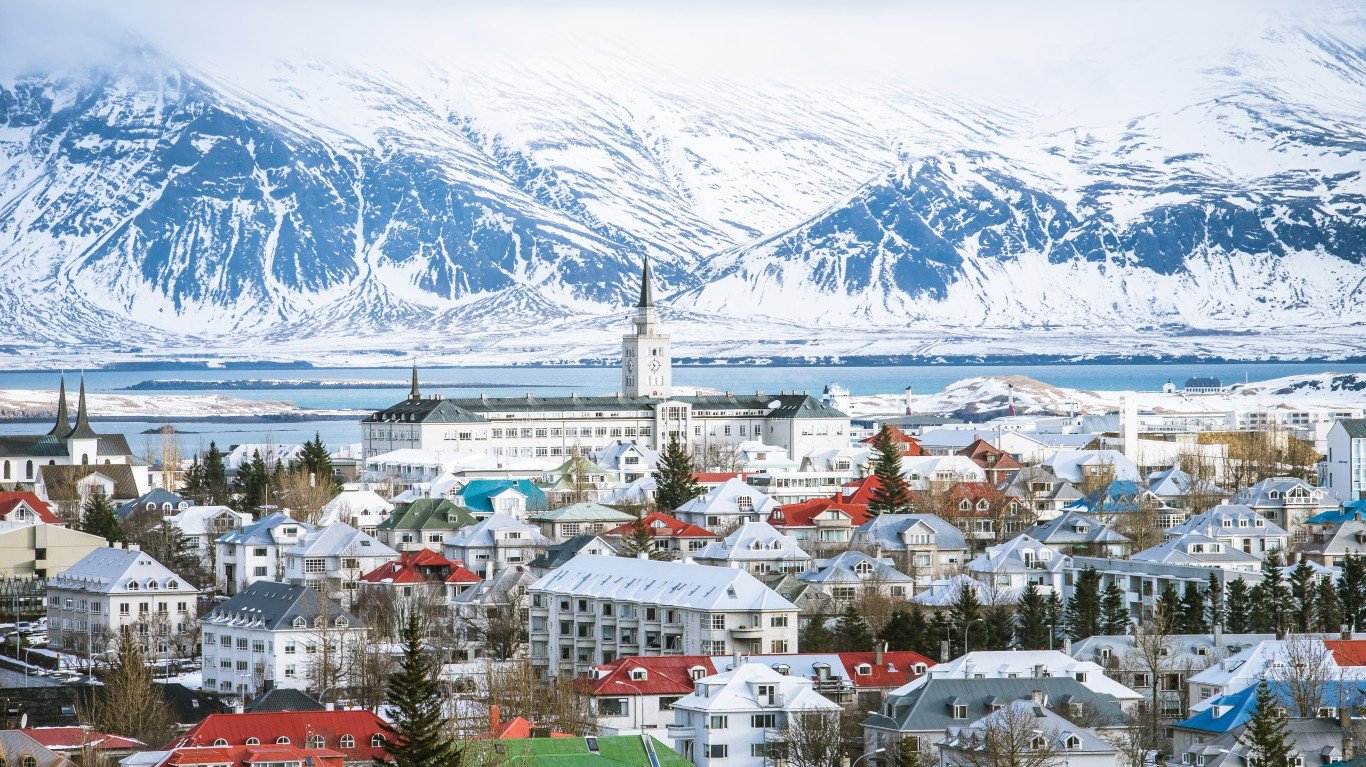
5. Iceland
> Population density: 9 people per square mile
> Est. population 2020: 366,425 — #175 out of 217 countries
> Land area: 38,931 square miles — #105 out of 217 countries
> Population growth, 2015-2020: 10.8%
Iceland, the second-largest island in Europe, is relatively isolated in the Atlantic Ocean, sitting just outside the Arctic Circle between Greenland and Scotland. The interior of the island has a harsh arctic climate, with the coastal areas being milder and more populated. Over 95% of Iceland’s population lives in urban areas along the coast.
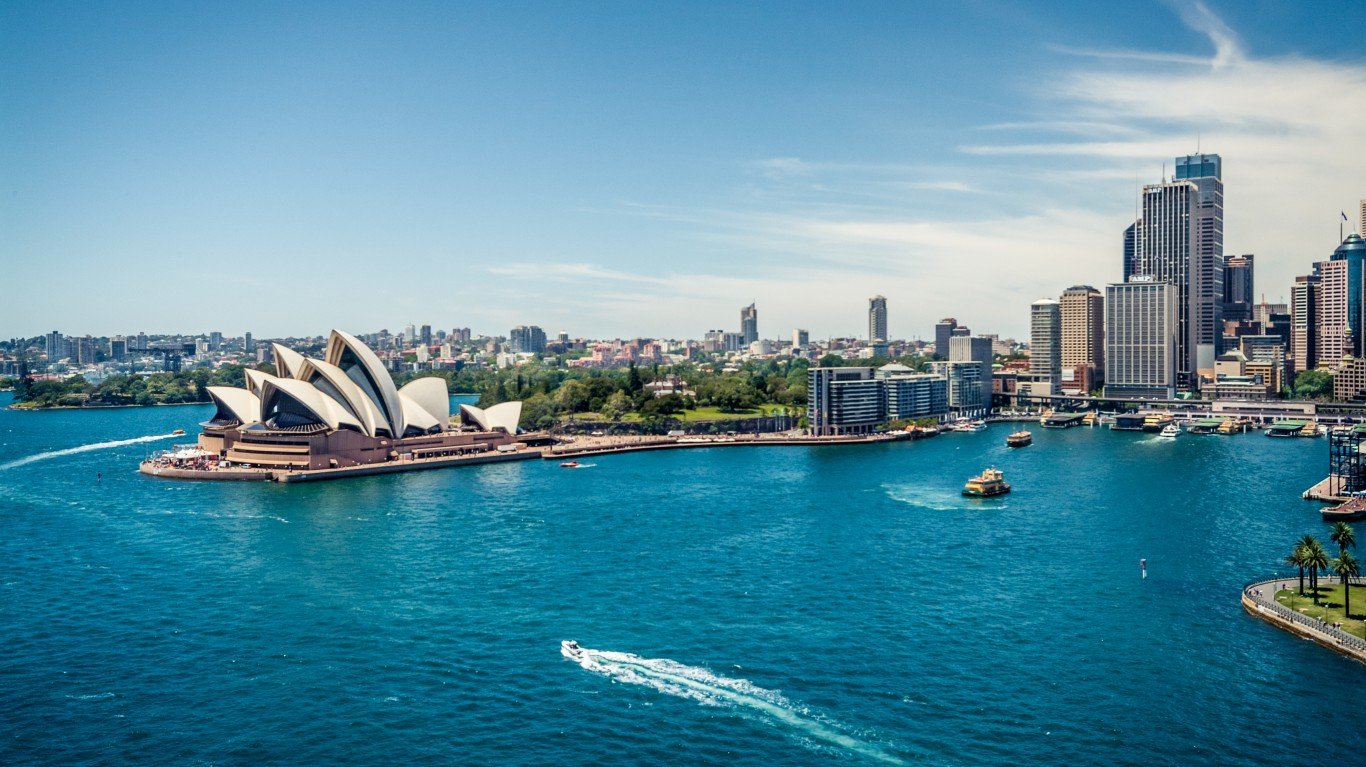
4. Australia
> Population density: 9 people per square mile
> Est. population 2020: 25,687,041 — #55 out of 217 countries
> Land area: 2,969,904 square miles — #6 out of 217 countries
> Population growth, 2015-2020: 7.9%
Australia is the sixth-largest country in the world, encompassing an area nearly the size of the 48 contiguous United States. The population is most dense in coastal regions, as the arid center of the country experiences prolonged periods of drought, deadly heat waves, and wildfires. Rising temperatures, a result of climate change, are worsening these conditions.
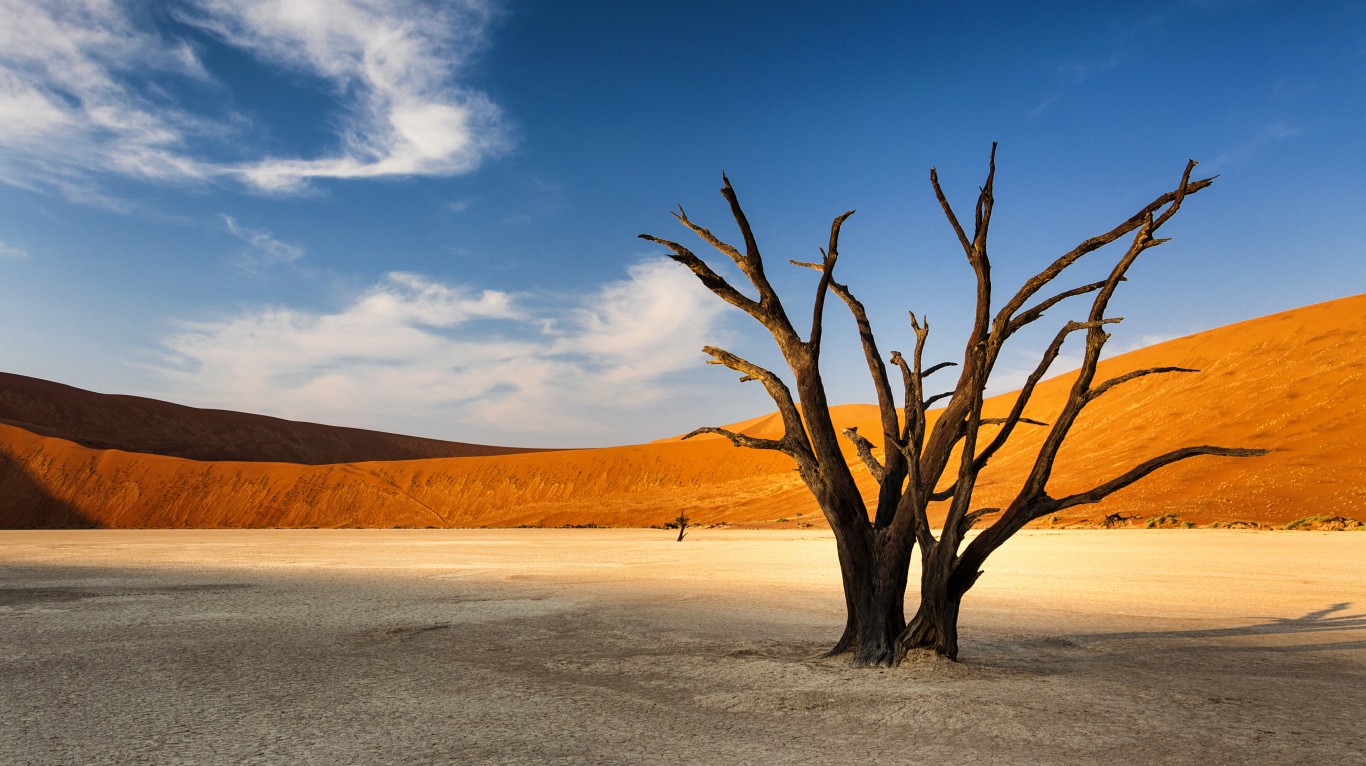
3. Namibia
> Population density: 8 people per square mile
> Est. population 2020: 2,540,916 — #141 out of 217 countries
> Land area: 317,874 square miles — #33 out of 217 countries
> Population growth, 2015-2020: 9.8%
A desert area rich in minerals but with little arable land, Namibia suffers from long periods of drought. About 55% of the population lives rurally, mostly along the northern and northeast border where water is more accessible. Population growth decreased in the 1990s due to the AIDS epidemic.
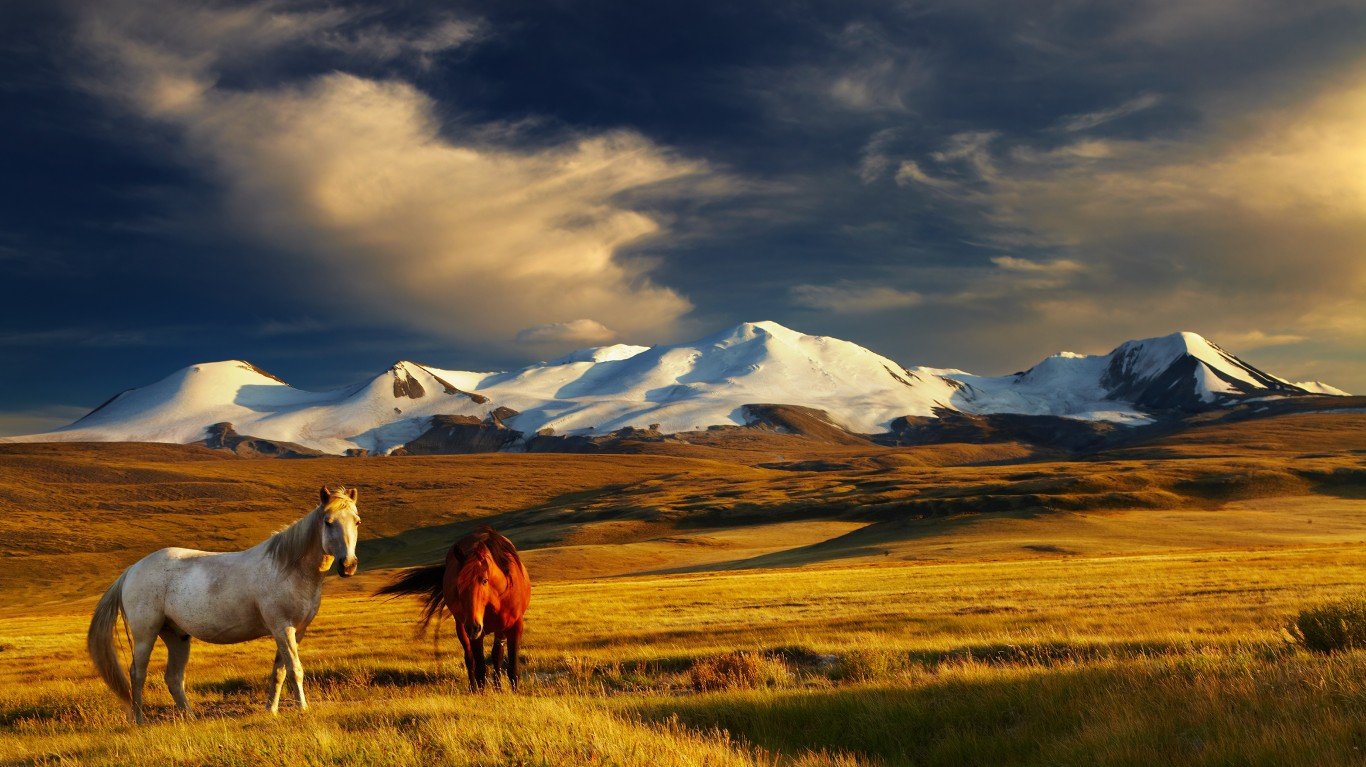
2. Mongolia
> Population density: 5 people per square mile
> Est. population 2020: 3,278,292 — #133 out of 217 countries
> Land area: 601,259 square miles — #18 out of 217 countries
> Population growth, 2015-2020: 9.3%
Mongolia’s landscape is largely steppe, desert, and semidesert, and 75% of the land is used for livestock grazing. About 45% of the population lives in the capital of Ulaanbaatar, the coldest capital city in the world.
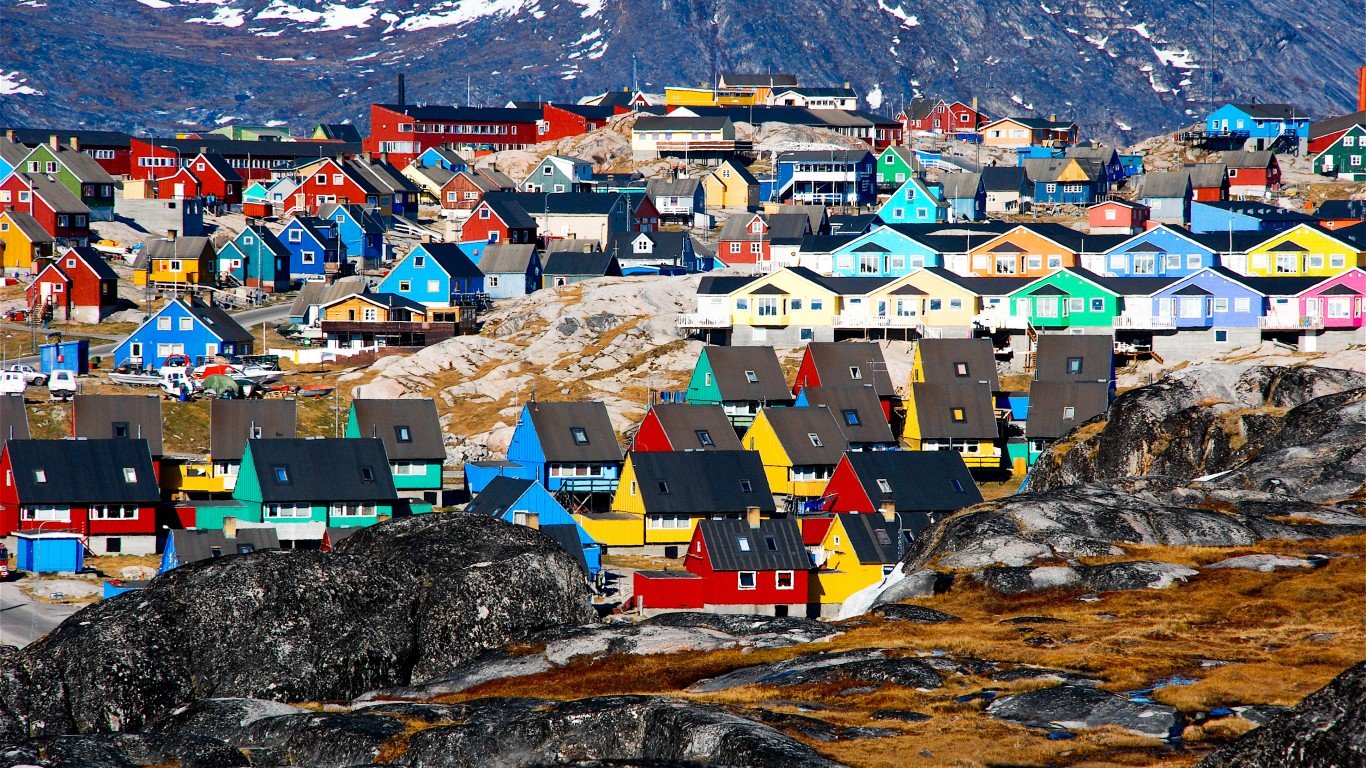
1. Greenland
> Population density: 0 people per square mile
> Est. population 2020: 56,367 — #202 out of 217 countries
> Land area: 158,476 square miles — #58 out of 217 countries
> Population growth, 2015-2020: 0.5%
About 80% of the island nation of Greenland is covered by a massive glacier. The country’s arctic and subarctic temperatures range from the 30’s to the 50’s in the summer and are consistently below zero in the winter. Most of the population are Kalaallit (an Inuit people) and over 80% live on the southwest coast, which has the mildest climate.






